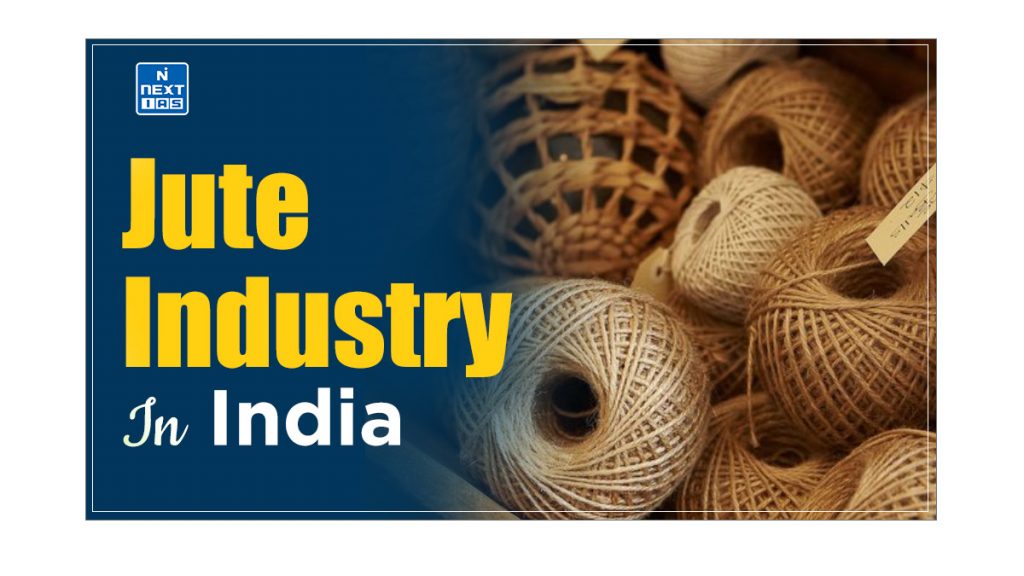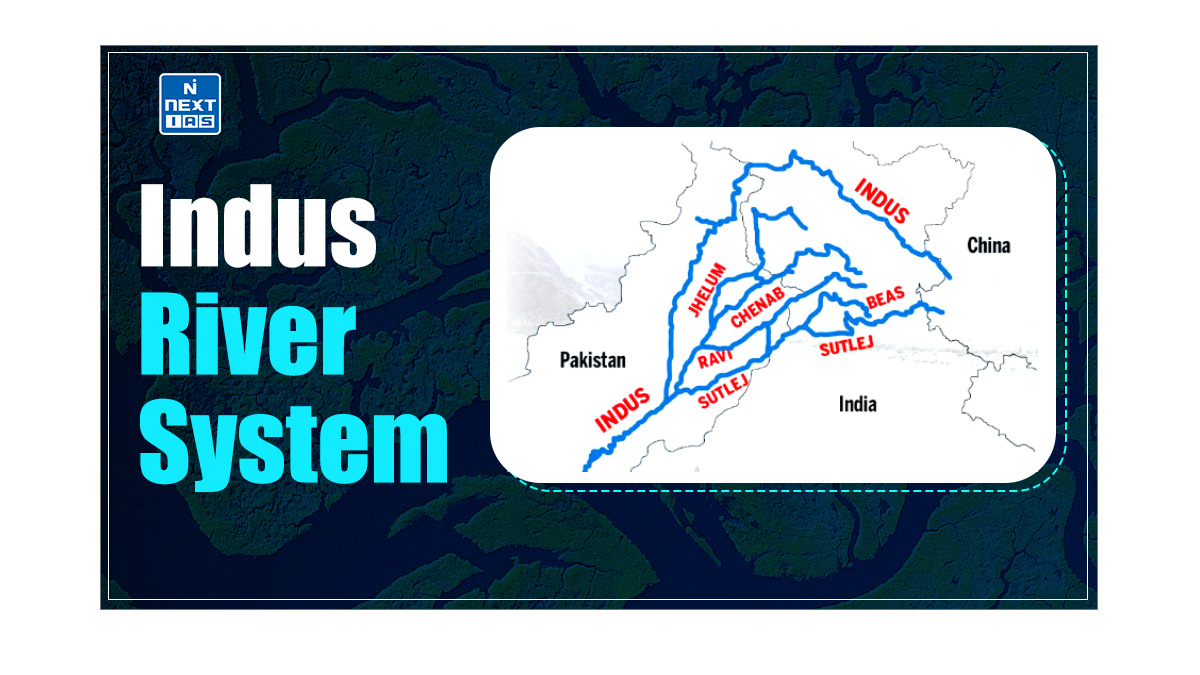
Jute is one of the most important fibre crops in India, known for its diverse applications and economic significance. Widely used in manufacturing products like gunny bags, ropes, carpets, and tarpaulins, it is valued for its low cost, softness, and strength. This article aims to study in detail the conditions required for jute cultivation, its production and distribution, trade dynamics, and its economic importance.
About Jute
- It is the second most crucial fibre crop in India after cotton.
- It is used for manufacturing gunny bags, ropes, carpets, rugs, tarpaulins, and more.
- This crop has great demand due to its low price, softness, and strength.
- However, the introduction of synthetic alternatives has resulted in a decline in demand for jute.
Conditions for Growth of Jute
- This crop grows in a hot (24°C to 35°C) and humid climate (120 to 150 cm) with 80 to 90 per cent relative humidity during its growth.
- Growing the crop requires a lot of water. Sowing and raising saplings are carried out in the pre-monsoon season with 25 cm to 55 cm of rainfall.
- This is done to take full advantage of the monsoon season.
Cultivation of Jute in India
- It is generally sown in February and harvested in October (the crop takes 8-10 months to mature).
- Alluvial soils (light sandy or clayey barns) are considered to be best suited for this crop.
- Like cotton, it also rapidly exhausts soil fertility. The soil must be replenished annually by the silt-laden flood water of the rivers.
Production of Jute in India
- After partition, 75% of the jute-producing areas went to Bangladesh. However, most of the jute mills remained in India.
- There was a rapid increase in area, production, and yield between 1950 to 1980.
- Negative trends have been observed in area, production, and yield from 1981 till present.
- This is due to changes in weather conditions, an increase in rice cropped area, and the introduction of synthetic alternatives to this crop, among other factors.
- India accounts for about 56% of world jute production, while Bangladesh is second with 25%.
Distribution of Jute in India
- Over 99 per cent of the total jute in India is produced in just five states:
- West Bengal,
- Bihar,
- Assam,
- Andhra Pradesh, and
- Odisha.
| Note: Andhra Pradesh (delta area) and Odisha are important producers. |
| States | Position | Factors |
| West Bengal | First (81% of India’s jute production) | Enough jute mills are located in the Hugli basin.Hot and humid climate.Alluvial, loamy soil.Cheap, abundant labour. |
| Bihar | Second (8.67%) | |
| Assam | Third (7.78%) |
Trade in Jute in India
- Import of Raw Jute – India imports this raw crop from Bangladesh to meet the demand of its jute mills, as domestic production is insufficient to supply all the mills.
- Export of Jute Hessian – India exports jute hessian (a type of woven fabric) to Bangladesh, utilising its production surplus.
- International Market Reach – India exports various jute products, including jute bags, carpets, and ropes, to numerous countries, enhancing its global trade footprint.
- Trade Balance Impact – While India imports this raw crop, its exports of processed products help balance trade deficits and contribute positively to the country’s foreign exchange earnings.
Development and Promotion of Jute Industry in India
- This industry plays a crucial role in India’s economy, particularly in the eastern regions where jute cultivation is concentrated.
- India is the largest producer of raw jute and jute products globally, with West Bengal being the hub of jute production and industry.
- Government initiatives such as the National Jute Policy have driven the development and promotion of this industry.
- This policy aims to enhance the sector’s competitiveness through modernisation, technological upgrades, and improved market access.
- Additionally, promoting eco-friendly jute products, such as biodegradable bags and packaging materials, has gained momentum in recent years, aligning with global environmental concerns.
Economic Importance of Jute
The economic importance of this crop can be seen as follows:
- Significant Revenue Generator – It is a major revenue-generating crop in India, contributing notably to the agricultural sector’s GDP. Its value as a cash crop supports the economic stability of regions where it is cultivated.
- Support to Related Industries – This industry supports several sectors, including producing gunny bags, ropes, carpets, and tarpaulins. This interdependence strengthens rural economies and industrial activities.
- Export Potential – India is a leading exporter of jute products, which have a significant value in international markets. This export potential enhances the national economy and supports trade balances.
- Employment Opportunities – Crop cultivation creates direct and indirect job opportunities for millions, including farmers, labourers, and workers in the processing and manufacturing sectors. This widespread employment is crucial for rural economies.
- Income Stability – It is a primary source of income for many farmers, particularly in jute-growing regions, providing financial stability and economic security.
- Increased Livelihood – Crop cultivation improves the standard of living for farming communities by ensuring a steady income source, contributing to rural development, and enhancing overall economic well-being.
Conclusion
Jute remains a vital crop in India, significantly impacting the agricultural sector and rural economies through its production and trade. While facing competition from synthetic materials, its economic value as a significant revenue generator, employment provider, and contributor to export earnings underscores its importance. This industry supports various related sectors and plays a crucial role in enhancing the livelihoods of millions. Understanding its cultivation conditions, production trends, and trade dynamics is essential for sustaining and maximising the benefits of jute in India’s economy.
National Jute Board
- The NJB, established under the National Jute Board Act of 2008, functions as the apex body for promoting and developing the jute sector in India.
- The NJB operates under the Ministry of Textiles and is pivotal in enhancing the jute industry’s competitiveness through various initiatives to improve productivity, marketability, and innovation within the sector.
- The NJB implements schemes that promote using these products, mainly focusing on sustainable and eco-friendly alternatives, such as biodegradable jute bags.
Frequently Asked Questions (FAQs)
What type of crop is jute?
It is a fiber crop primarily grown for its strong, natural fibers used in making textiles, ropes, and biodegradable packaging materials.
In which part of India is jute cultivated?
It is primarily cultivated in the eastern part of India, particularly in West Bengal, along with parts of Bihar, Assam, and Odisha.






